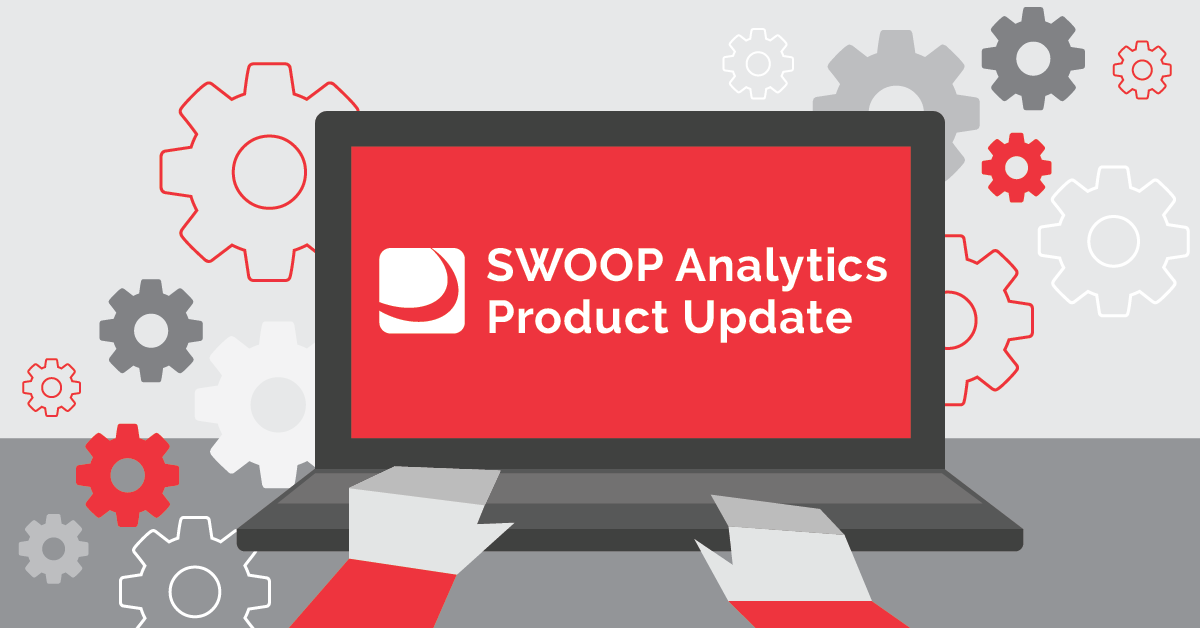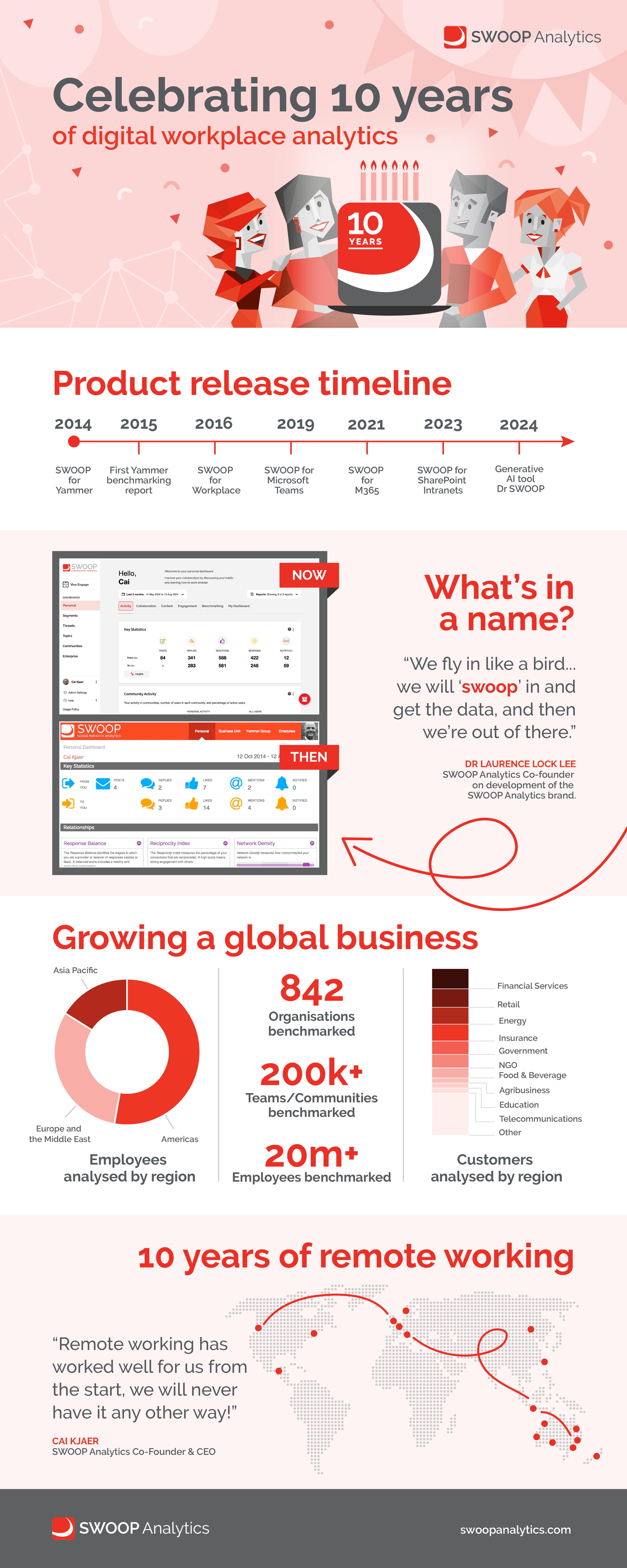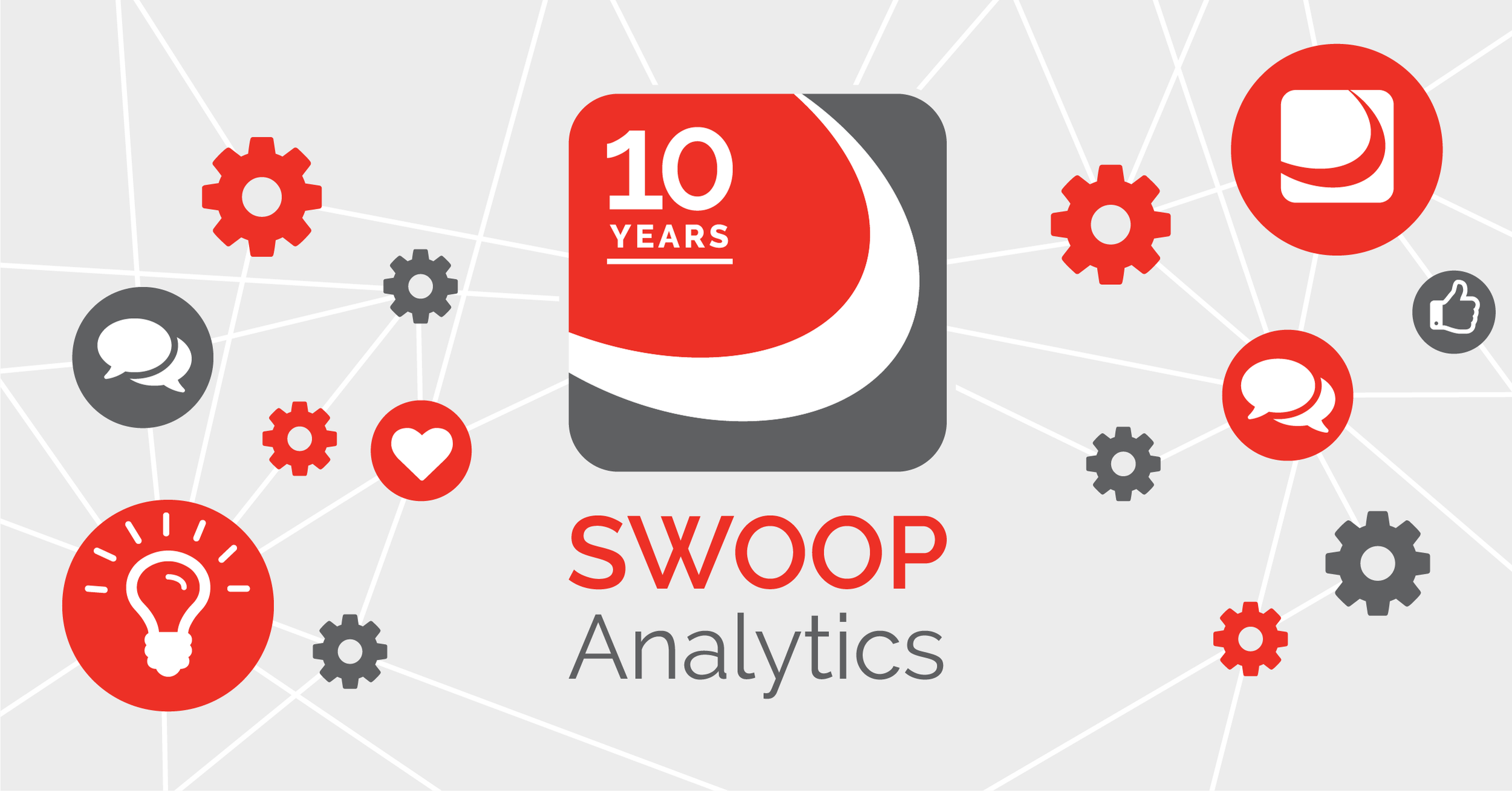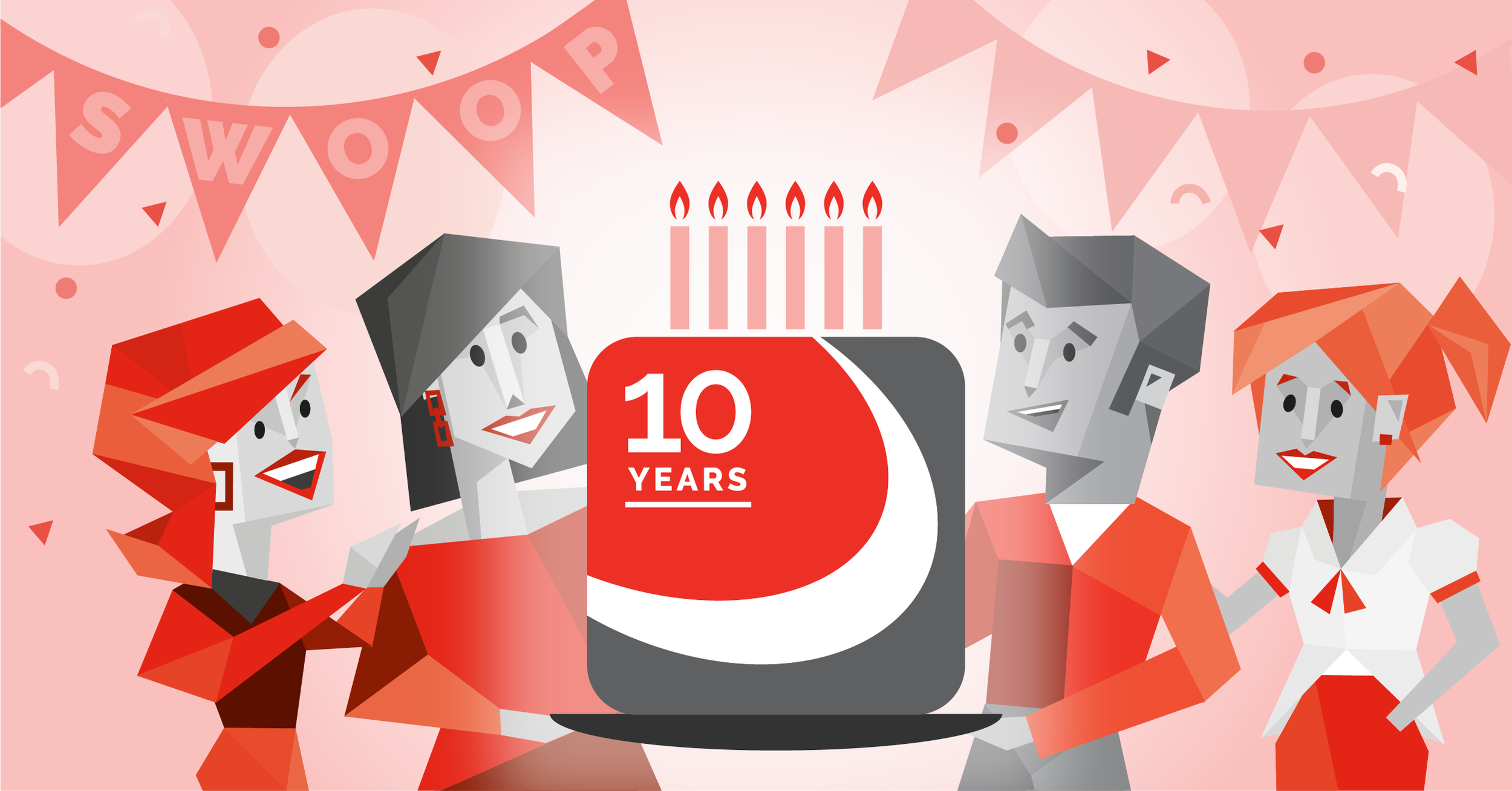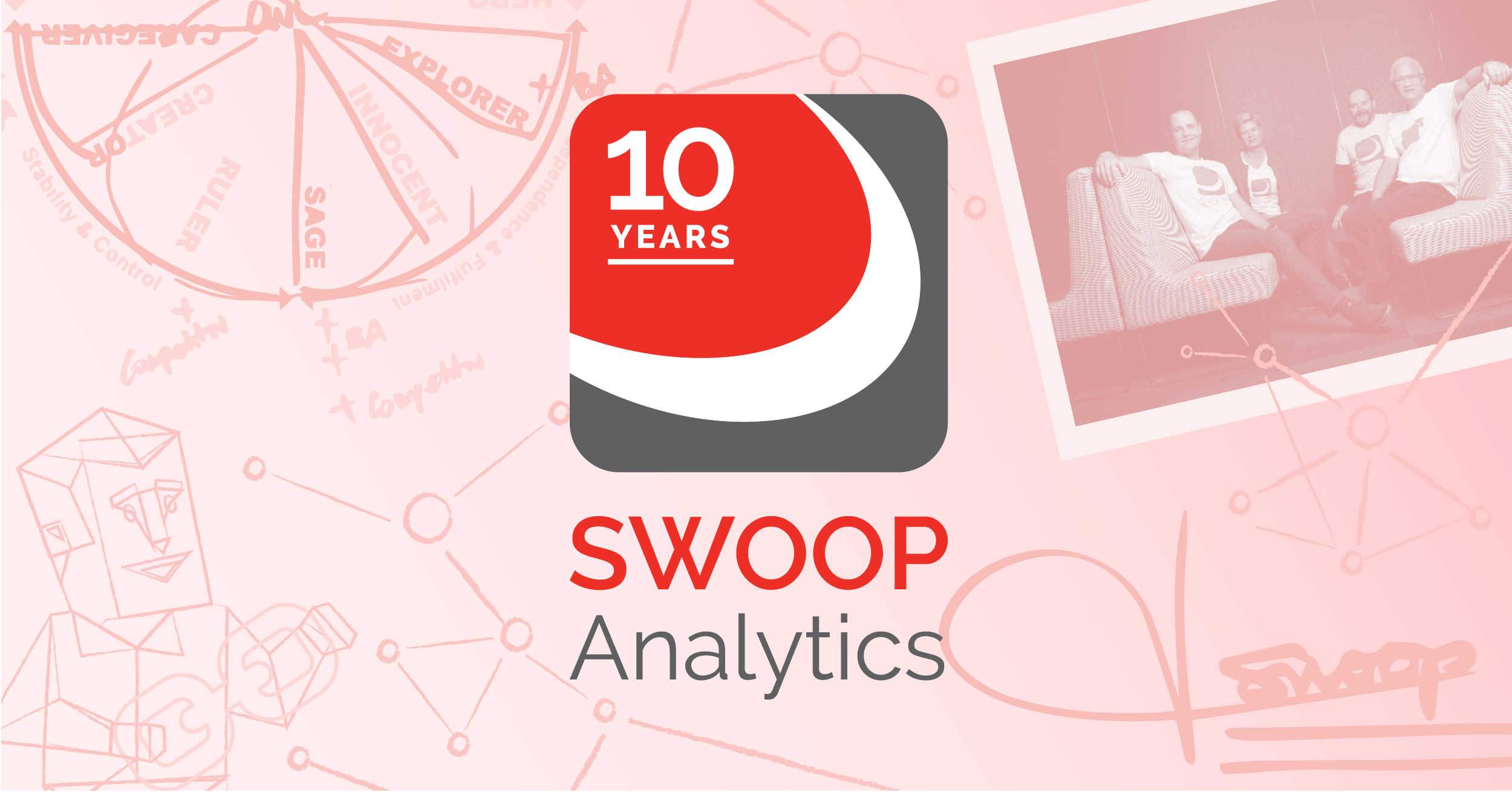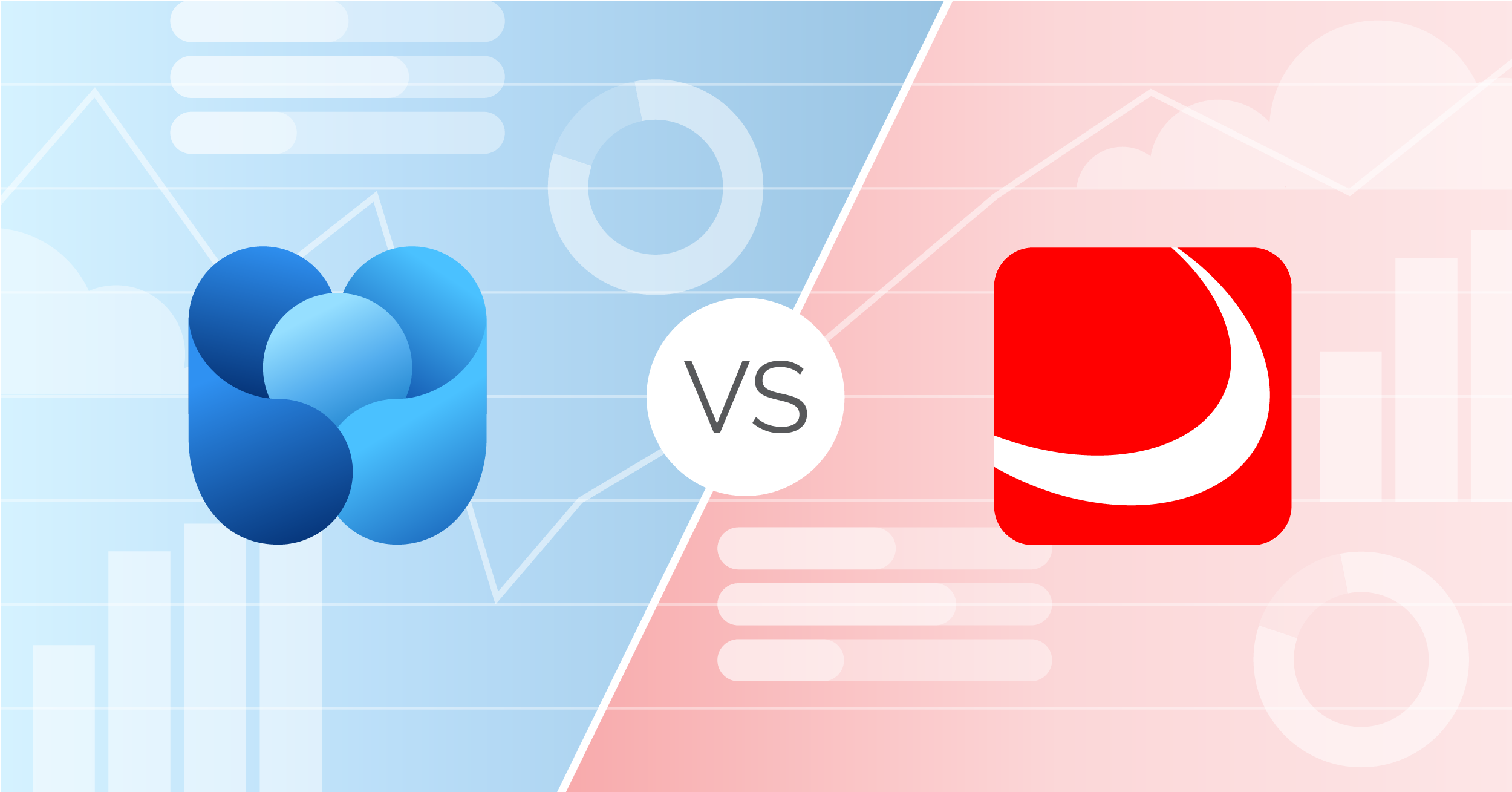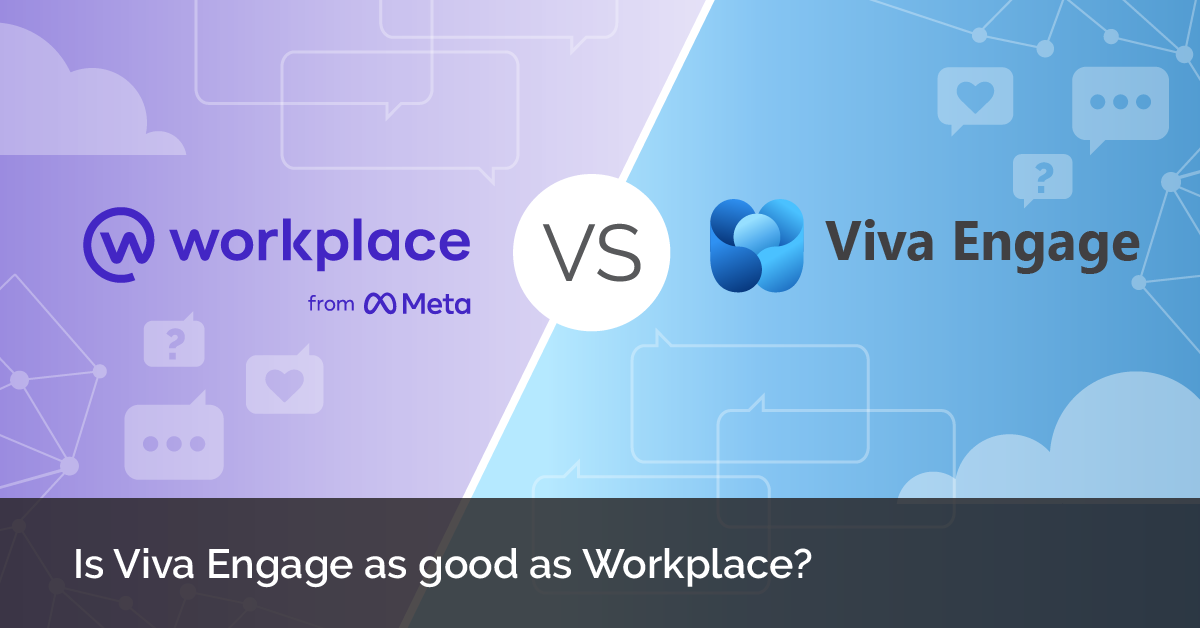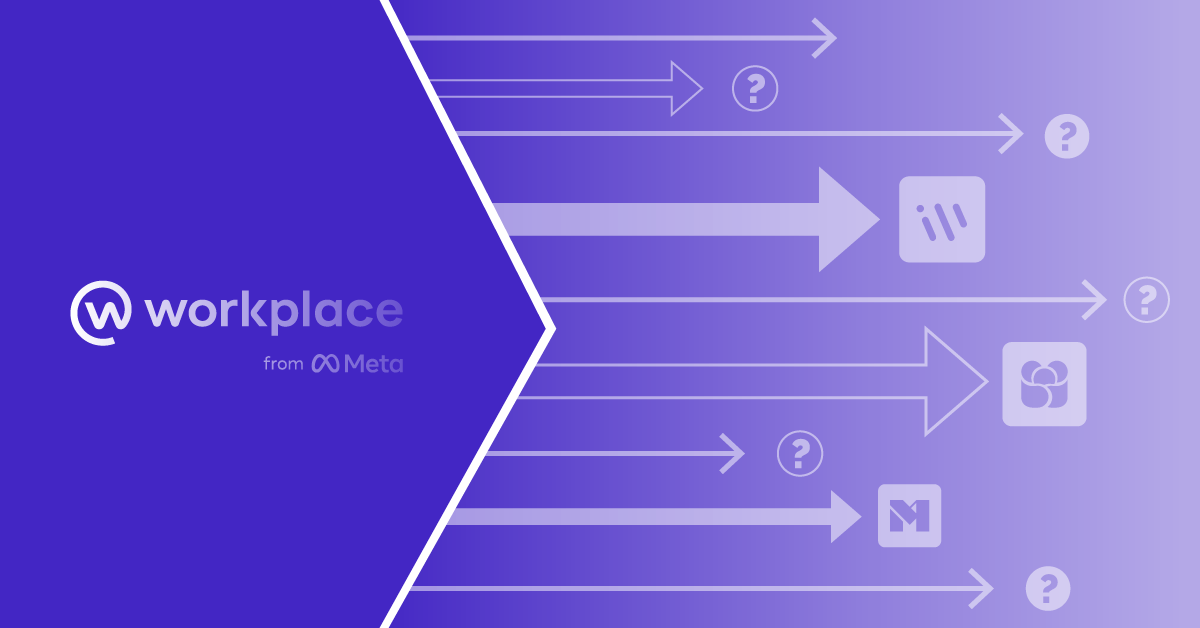
SWOOP Blog
Latest Articles
Blog Archive

The Enterprise Social Network Graph Battle: Who Is Poised to Win?
Graphs have been around forever, but the internet has given them new life. It's refocused our attention on the use of graph concepts for information search as an option to traditional hierarchical taxonomic search.

Data-Driven Collaboration Part 2: Recognizing Personas and Behaviors to Improve Engagement
In Part 1 of this series, “Data-Driven Collaboration Design”—a collaboration between SWOOP Analytics and Carpool Agency—we demonstrated how data can be used as a diagnostic tool to inform the goals and strategies that drive your business’ internal communication and collaboration. In this post, we will take that thought one step further and show how, after your course is charted to improve internal communication and collaboration, your data continues to play a vital role in shaping your journey.

Connecting the enterprise - one tool breaks the rule
The world is getting more interdependent, and to get stuff done more people need to coordinate what they are doing with people in other business units. No wonder that collaboration is a hot topic. But what has surprised me is that in spite of an increasing number of tools, most of them are actually not connecting people across business unit boundaries. Sounds like a contradiction? Read on…

How to Use Hashtag Analytics to Track Employee Engagement
The origin of the hashtag can be traced to identifying key words in computer code. From there it evolved to tagging topics or groups in early chat rooms.
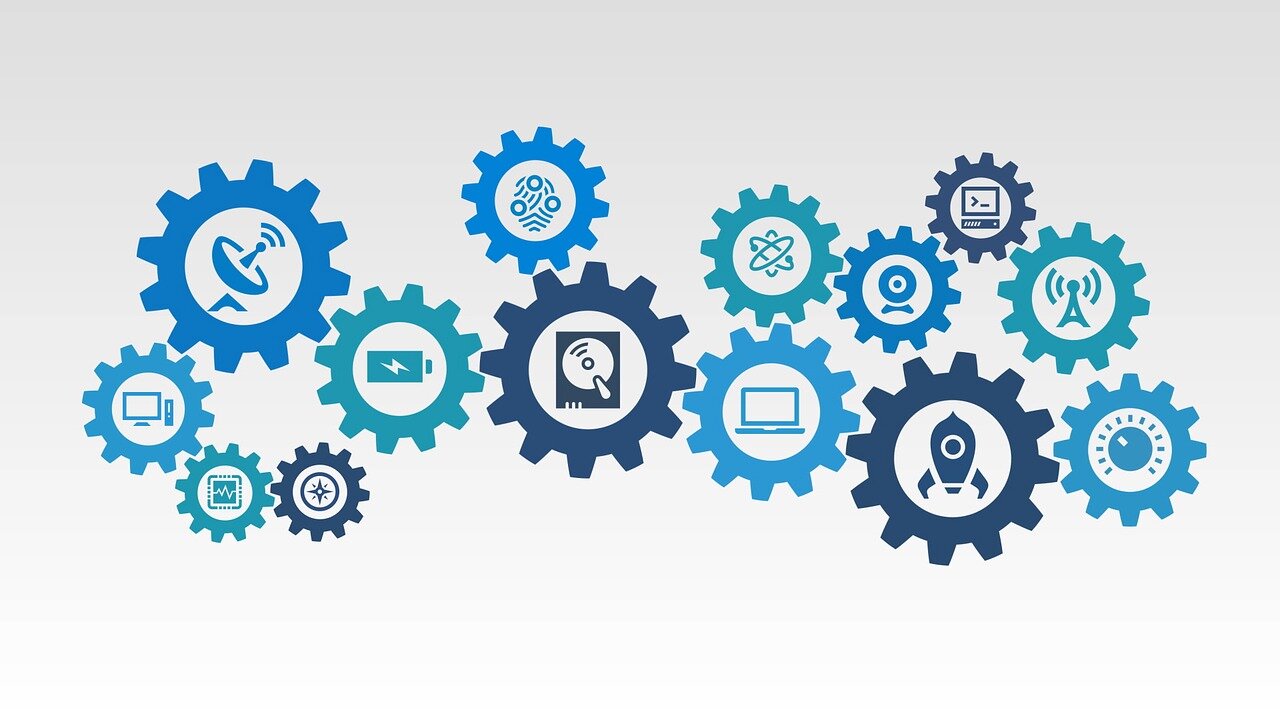
Data-Driven Collaboration Part 1: How Rich Data Can Improve Your Communication
This is the first of a series, coauthored by Laurence Lock Lee of SWOOP Analytics and Chris Slemp of Carpool Agency, in which we will explain how you can use rich, people-focused data to enhance communication, increase collaboration, and develop a more efficient and productive workforce.

Diversity is Essential but not Sufficient
Diversity is a big word in business today. We are preached to continuously about how important having diverse leadership is to improving your performance. HBR in their article on ‘Why Diverse teams are Smarter”, identify studies showing that diversity based on both ethnicity and/or gender can lead to above average returns.

Are we Getting Closer to True Knowledge Sharing Systems?
First generation knowledge management (KM) systems were essentially re-labelled content stores. Labelling such content as ‘knowledge’ did much to discredit the whole Knowledge Management movement of the 1990s. During this time, I commonly referred to knowledge management systems as needing to comprise both “collections and connections”, but we had forgotten about the “connections”.

Getting “Liked”: Is Content Overrated?
We are regularly bombarded with the message that “Content is King”, quickly followed by a plethora of methods, tips and even tricks on how to make our content more attractive i.e. being “Liked” by many. Social media has introduced the “Like” button so we can more explicitly signal our appreciation of the content that we are exposed to.

Digital Hub Platforms Can Improve Enterprise Collaboration
Looking for the perfect digital hub? Then look in the camera. That’s right, the perfect digital hub is you.

What can we Learn from Artificial Intelligence?
This might seem strange, suggesting that a science dedicated to learning from how we humans operate, could actually return the favour by teaching us about ourselves? As strange as this may sound, this is precisely what I am suggesting.

We’ve Disrupted the Formal Organisation: But what does it look like now?
Digital disruption, Holocracies, Wirearchies are attacking the formal hierarchy as we had come to know it. While we might accept that the formal hierarchy is becoming less reflective of how work is getting done, it still reflects how senior executives are designing for work to be done.

SWOOP Video Blog 2 - Yammer Groups
In this second episode of Swoop Benchmarking insights we are drilling down to the Yammer Group level. Groups are where the real collaborative action happens.

Who Should Decide How You Should Collaborate?
In a recent post, prior to Microsoft’s recent Ignite 2016 conference, we intimated that we hoped that in the push to build the ultimate office tool the core features of the component parts were not sacrificed in the name of standardization. Yammer, has re-surfaced as a more integral part of Office 365.

Can the 'Like' Economy Work Inside the Enterprise?
Now that Workplace by Facebook is here, the big question is whether the behemoth consumer social network can effectively work its magic inside the enterprise.

Yammer Benchmarking Edition 1
First in a series of SWOOP Yammer Benchmarking video blogs. SWOOP has benchmarked some 36 Yammer installations to date. This first video blog shares some insights gained on the important measures that influence collaboration performance.

Disrupt Sydney 2016 - Not to Take Anything for Granted
Q&A with SWOOP Co-Founder Dr Laurence Lock Lee after attending and presenting at “Disrupt Sydney” on 23 September, 2016. Disrupt Sydney is a one-day annual conference organised by the University of Sydney which aims to discuss and debate (digital) disruption.

Looking Beyond the Product to the Purpose: MS Office 365 Groups
Need a conversation starter? How about the Mac vs PC? IPhone vs Galaxy? Facebook vs Twitter? Beach vs Mountains? Clinton vs Trump? Nothing better to while away a few hours than an animated conversation and debate about why I might prefer one product over another. We all know in the end that despite extensive reported analyses and feature lists and the like, our choices are likely deeper than a simple feature by feature trade-off. It’s much subtler than that. An Apple zealot is aligning with Apple’s stated core purpose; its user experience mantra. People will keep lining up outside Apple stores as long as Apple can sustain its mantra. A swipe instead of a click may not seem much, but for an Apple zealot it reinforces their strong preferences to buy Apple.

Q&A: Start-ups vs Large Corporates
SWOOP Analytics celebrated its second birthday late last month with our distributed workforce face-to-face, many for the first time; and also many of our early adopter partners and clients. Unlike most start-ups addressing the consumer market, SWOOP Analytics targets the ‘big end of town” i.e. large corporates and public institutions whose procurement practices go far beyond someone simply pushing the ‘buy’ button. We have been fortunate to have several highly experienced executives and consultants advising us on our product startup journey. We thought we would take advantage of their presence to conduct a mock Q&A panel session, modelled on the ABC show Q&A. We chose our panel members based on their experience with working and advising both start-ups and large corporations. Our panel topic was “How can Startups work Effectively with Large Corporates”.

What do Customer Communities have in Common with Employee Communities?
In June we wrote a blog post “Is Bridging the Enterprise-Consumer Social Networking Divide a Bridge too Far”, which went to some length in describing why these two worlds appeared to be operating in different solar systems. In fact, we pointed out that blindly adopting the media centricity and activity measures from consumer social networking into the Enterprise, could actually cause more harm than good. In this post we want to explore what might be common and potentially useful adoptions from the consumer world to inside the Enterprise. I must say that this post has been influenced by Michael Wu coming to town and telling us a little about his perspectives on the ‘Science of Social’ . Michael is the chief scientist at Lithium, an organisation that specialises in customer communities. While my interest in customer communities is somewhat less than my interest in Enterprise communities, Michael Wu is well regarded in the world of data science, so I was sure to learn something from him; and I wasn’t disappointed.

What Enterprise Social Networking Can Learn from Pokémon Go
Pokémon itself was not an overnight success. It was Niantic's release of a location-enabled version for smartphones that triggered its viral growth. Enterprise Social Networking (ESN) has been around for quite a while too. Viral growth, however, is still an unfulfilled aspiration for most.


